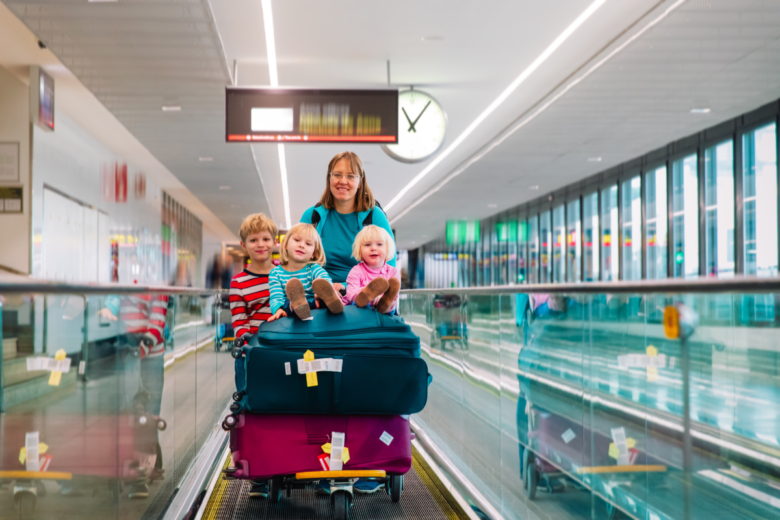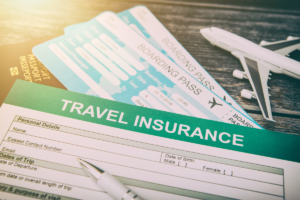Traveling with children can be a delightful and enriching experience, creating lasting memories for both parents and little ones. However, ensuring the safety of your family during your travels is of paramount importance. From planning and preparation to on-the-road safety measures, this article will guide you through the essential steps to guarantee a safe and enjoyable family adventure.
Pre-Trip Preparations
1. Research Your Destination
Before embarking on your family adventure, thorough research is key. Here are some aspects to consider:
- Health and safety: Investigate the safety and healthcare standards of your destination. Are there any required vaccinations? Are there any health advisories or safety concerns you should be aware of?
- Local laws and customs: Familiarize yourself with the laws and customs of the place you’re visiting. Some behaviors that are acceptable at home may be frowned upon or even illegal in other countries.
- Emergency contacts: Note down local emergency numbers and the address of the nearest embassy or consulate in case of any emergencies.
2. Pack a Comprehensive First-Aid Kit
A well-stocked first-aid kit is essential for any family trip. Include items such as band-aids, antiseptic wipes, pain relievers, insect repellent, and any necessary prescription medications for your children. Ensure that the kit is easily accessible during your journey.
3. Childproof Your Accommodation
When booking accommodations, consider childproofing options. Request childproof locks for cabinets, corner protectors, and outlet covers if necessary. Baby gates, crib rentals, and high chairs can also be arranged in advance.
On-the-Road Safety
4. Child Restraint Systems
For the safety of your children while traveling in a vehicle, it is crucial to use appropriate child restraint systems:
- Infant car seats: For babies under one year and less than 20 pounds, use rear-facing infant car seats.
- Convertible car seats: For children between one and four years old, use a rear-facing convertible car seat.
- Forward-facing car seats: Once your child has outgrown the rear-facing seat, transition to a forward-facing car seat with a harness.
- Booster seats: For older children who have outgrown their forward-facing seats but are not yet tall enough to use a seat belt, use a booster seat.
Ensure that these seats are installed correctly, following the manufacturer’s instructions and local regulations.
5. Seatbelt Safety
For older children who have outgrown booster seats, it’s essential to ensure they use seat belts correctly:
- Proper fit: The lap belt should rest low across the hips, not the stomach, and the shoulder belt should cross the chest and shoulder, not the neck.
- Never share seat belts: Children should have their designated seat with their seat belt.
- Seat belt education: Teach your children the importance of wearing seat belts and model the behavior by always wearing one yourself.
6. Entertainment and Comfort
Long journeys can be taxing for children, so it’s essential to keep them comfortable and entertained:
- Snacks: Pack a variety of healthy snacks and drinks to keep your children satiated during the trip.
- Entertainment: Bring along their favorite books, toys, games, or electronic devices to keep them occupied during the journey.
- Frequent breaks: Plan for regular breaks to stretch their legs, use the restroom, and burn off some energy.
In-Transit Safety
7. Supervision
While traveling, keep a close eye on your children at all times, especially in crowded places like airports, train stations, and tourist attractions. Establish a “buddy system” where older children are responsible for looking out for younger siblings.
8. Lost and Found
In case your child gets separated from you in a public place, teach them what to do:
- Stay in place: Instruct them to stay in the same spot where they last saw you.
- Find a trusted authority figure: Teach them to look for a security guard, police officer, or a store employee and let them know they are lost.
- Emergency contact: Make sure your child knows your name, your phone number, and the name of your accommodation.
Food and Hygiene
9. Food Safety
Children are more susceptible to foodborne illnesses, so take precautions:
- Bottled water: In regions where tap water may be unsafe, provide bottled water for drinking and toothbrushing.
- Safe food choices: Be cautious about where you dine and ensure that the restaurants or street food vendors have good hygiene practices.
- Wash hands: Encourage your children to wash their hands frequently, especially before eating.
Sun Protection
10. Sun Safety
Travel often involves spending time outdoors, so sun protection is essential:
- Sunscreen: Apply sunscreen with at least SPF 30 on your children’s exposed skin. Reapply it regularly, especially after swimming.
- Hats and sunglasses: Have your children wear wide-brimmed hats and sunglasses to protect their faces and eyes from the sun.
- Seek shade: Whenever possible, seek shade during the hottest parts of the day to avoid sunburn.
Exploring New Destinations
11. Choose Family-Friendly Activities
When planning your itinerary, select activities and attractions that are suitable for children. Consider their interests and energy levels. Family-friendly activities might include visiting children’s museums, zoos, amusement parks, or hiking trails with shorter, manageable distances.
12. Cultural Sensitivity
Teach your children about the local culture, customs, and etiquette of the places you visit. Encourage them to be respectful of local traditions and engage with the local community in a positive and respectful way.
Emergency Preparedness
13. Communication Plan
Create a communication plan with your family members, especially if you’re traveling with older children who may want to explore independently. Make sure everyone has a mobile phone or a way to contact you in case of separation.
14. Local Healthcare
Research healthcare facilities at your destination. Note the locations of hospitals, clinics, and pharmacies in case medical assistance is needed. Carry a copy of your children’s medical records and any necessary prescriptions.
Staying Informed
15. Stay Updated on Travel Advisories
Check for travel advisories and updates from your government’s travel website for the destination you plan to visit. Be prepared to adjust your plans if there are safety concerns or significant changes in the local situation.
Conclusion
Traveling with children can be a rewarding experience that enriches their lives and creates cherished family memories. However, ensuring their safety should be a top priority throughout your journey. By thoroughly preparing before your trip, following safety guidelines on the road, and remaining vigilant during your travels, you can create a secure and enjoyable adventure for your entire family.
Remember that safety is a collaborative effort, and involving your children in safety discussions and teaching them essential safety rules can empower them to be active participants in their own well-being. With the right precautions and a little creativity, you can embark on exciting family adventures with confidence, knowing that you’re prioritizing the safety of your loved ones.
Travel is an opportunity for learning and growth, and teaching your children about safety and cultural awareness during these adventures can be as valuable as the destinations themselves. With careful preparation and a commitment to safety, you can explore the world with your family, creating a lifetime of shared adventures and unforgettable moments. Safe travels and happy family explorations!



